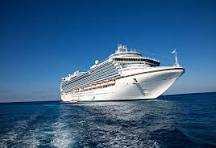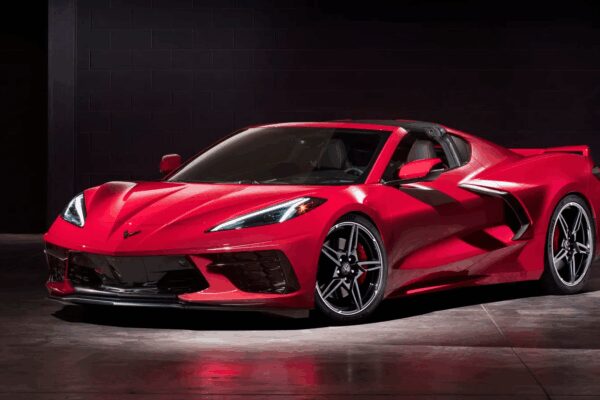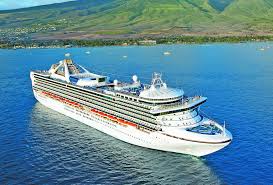When temperatures in Pakistan soar during the summer months, your car’s engine faces intense heat. Using coolant in the radiator is not just important—it’s essential. In this complete guide from Carrera Pakistan, we explain why coolant is vital in summers, how it works, best practices, and answers to common questions. Read on to ensure your vehicle stays cool, your engine safe, and your radiator running at peak performance.
Table of Contents
Understanding Coolant and Its Role
How Coolant Works in a Car Radiator
5 Reasons Why Coolant Is Crucial in Summers
Preventing Overheating
Reducing Corrosion
Enhancing Engine Efficiency
Avoiding Boil-Over
Prolonging Radiator Lifespan
Types of Coolant Used in Pakistan
How to Check and Refill Coolant Safely
Signs of Low or Degraded Coolant
Carrera’s Tips for Summer Radiator Maintenance
10 Questions & Answers (FAQs)
Conclusion
1. Understanding Coolant and Its Role {#h2}
Coolant—also known as antifreeze—is a fluid designed to regulate engine temperature. Typically a mix of water and ethylene glycol or propylene glycol, coolant circulates through your car’s engine and radiator. It not only absorbs excess heat produced by combustion but also lowers the freezing point in winter. In Pakistan’s sweltering summers, coolant’s heat-absorption and temperature regulation capabilities become invaluable.
2. How Coolant Works in a Car Radiator {#h2}
During operation, your engine generates massive heat. The coolant absorbs this heat and transfers it to the radiator, where air passing through the radiator fins dissipates it. The cooled fluid cycles back into the engine, repeating this process continuously. Maintaining the correct coolant mix, level, and condition ensures efficient heat transfer—especially crucial when ambient temperatures exceed 40 °C (104 °F) during summers in Lahore or Karachi.
3. 5 Reasons Why Coolant Is Crucial in Summers {#h2}
3.1 Preventing Overheating {#h3}
Without sufficient coolant, engines easily reach temperatures that damage internal parts. Overheating can lead to:
Cylinder head or gasket damage
Warped engine components
Complete engine breakdown
In summer, under load or in traffic, coolant absorption and dissipation is your engine’s first defense.
3.2 Reducing Corrosion {#h3}
Coolant contains corrosion inhibitors that protect the radiator, hoses, pump, and engine passages. Pakistan’s hard water can cause rust and mineral deposits, accelerating corrosion. Coolants formulated with robust anti-corrosion agents create a barrier, preserving engine life.
3.3 Enhancing Engine Efficiency {#h3}
Consistent engine temperatures optimize fuel combustion and efficiency. Overheated or extreme fluctuations lead to:
Reduced fuel efficiency
Uneven combustion
Excessive emissions
Using coolant helps maintain peak engine performance, contributing to better mileage and smoother rides.
3.4 Avoiding Boil‑Over {#h3}
Pure water can boil above 100 °C (212 °F) at atmospheric pressure, but engines operate under higher pressure. Coolant raises the boiling point (~120–130 °C or higher), preventing steam formation that could lead to “boil-over”—an event where coolant escapes radiator vents, causing sudden overheating.
3.5 Prolonging Radiator Lifespan {#h3}
A well-formulated coolant mix lubricates the water pump and seals, reducing wear. Degradation leads to sediment accumulation, pump failure, and leaks. Especially under constant high summer temperatures, the correct coolant can save repair costs and downtime.
4. Types of Coolant Used in Pakistan {#h2}
4.1 Conventional (Inorganic Additive Technology: IAT) {#h3}
Contains silicates and phosphates
Requires frequent replacement (every 2 years)
Cost-effective but shorter lifespan
4.2 Organic Additive Technology (OAT) {#h3}
Long-life additives (carboxylates, nitrates)
Changed every 4–5 years
Less frequent service intervals
4.3 Hybrid OAT (HOAT) {#h3}
Combines benefits of both IAT and OAT
Moderate service intervals (every 3 years)
Balanced protection
4.4 Manufacturer-Specific (e.g., Dex-Cool®, Toyota Long Life) {#h3}
Special formulations by OEMs
Recommended for newer cars for warranty purposes
Ensure you select the coolant type specified in your manual
5. How to Check and Refill Coolant Safely {#h2}
5.1 Safety Precautions {#h3}
Never open the radiator cap when hot
Use gloves and eye protection
Work in a well-ventilated area
5.2 Step-by-step Guide {#h3}
Park the car on level ground and let the engine cool
Locate the coolant reservoir and inspect the level
Top up using premixed coolant or mix concentrate with distilled water
Inspect hoses and clamps for wear and leaks
Bleed air from the system, if required, by opening bleed valves or letting the engine idle with the radiator cap off
Check the coolant level again after a test drive, when cooled
6. Signs of Low or Degraded Coolant {#h2}
Temperature gauge rising above normal range
Steam or vapor from the hood
Consistent – low coolant level in reservoir
Rusty, dirty, or sludgy coolant in the reservoir
Heater not producing warm air in cabin
Strange engine noises (e.g. pump cavitation)
7. Carrera’s Tips for Summer Radiator Maintenance {#h2}
Use distilled water, not tap water, when diluting coolant
Flush the cooling system every 2–3 years
Inspect hoses, belts, and clamps before the onset of summer
Monitor radiator fan operation—ensure it kicks in at proper temperatures
Keep engine bay clean to ensure proper airflow
Avoid aftermarket additives unless certified by your vehicle manufacturer
Choose coolant rated for Pakistan’s temperatures, verified on the label
8. 10 Questions & Answers (FAQs) {#h2}
1. Can I use plain water instead of coolant in summer? {#h3}
While water cools, it lacks corrosion inhibitors and has a lower boiling point. In Pakistan’s hot summers, plain water raises the risk of overheating, internal rust, and cavitation. Always use a proper coolant mix.
2. What coolant-to-water ratio should I use? {#h3}
A 50:50 ratio is recommended—it provides optimal freezing and boiling point protection plus corrosion resistance. In extreme heat, a 60:40 mix (coolant:water) can offer additional protection.
3. How often should I flush the coolant? {#h3}
For IAT coolant, flush every 2 years. For OAT/HOAT, every 3–5 years depending on manufacturer. Always check your user manual or Carrera’s service guidelines.
4. My oil seems foamy. Can that be from coolant leak? {#h3}
Yes. Mixing of coolant with oil forms a milky emulsion—a sign of head gasket issues. Address this immediately to prevent severe engine damage.
5. Is green coolant better than orange or pink? {#h3}
The color indicates the additive type, not quality. Stick to the coolant type recommended by your vehicle manufacturer. Using the wrong color can reduce effectiveness or void warranty.
6. Can coolant freeze in winter? {#h3}
Coolant lowers the freezing point. A 50:50 mix typically protects down to around −37 °C, more than enough for Pakistani winters. Pure water, on the other hand, freezes near 0 °C.
7. Does radiator need coolant even when using electric cars? {#h3}
Yes. Electric vehicles use coolant in battery temperature regulation, making it essential regardless of engine type.
8. What’s the cost of coolant top‑up at Carrera in Pakistan? {#h3}
Carrera offers mid-range coolant services for approximately PKR 500–800 per liter, depending on brand and type. Checking current rates at your local Carrera service center is recommended.
9. Can cooling system additives help? {#h3}
Certified coolant additives with corrosion inhibitors or pH stabilizers can help, but always choose Carrera-approved products. Avoid generic or cheap additives that can clog the system.
10. What if my engine overheats despite coolant? {#h3}
Pull over safely, switch off the engine, and let it cool for at least 15–20 minutes. Check coolant level, hose integrity, radiator cap function, and fan operation. If problems persist, seek Carrera service support immediately.
9. Conclusion {#h2}
Using coolant in your car radiator isn’t optional—it’s essential, especially during Pakistan’s intense summer months. Coolant protects your engine from overheating, corrosion, boil-over, and sustains performance. Whether you’re cruising Lahore’s highways or stuck in Karachi traffic, the right coolant solution keeps your journey smooth.
Carrera Pakistan recommends:
Always use the correct coolant type
Maintain proper coolant-to-water ratios
Perform timely flushes and top-ups
Schedule regular checks through Carrera’s certified service centers
Stay cool this summer—protect your car with the best coolant care from Carrera.
Keywords: Why Coolant Necessary for Car Radiator in Summers, Pakistan, Carrera, engine overheating, https://carrera.pk/products/carrera-long-life-radiator-coolant-red-4ltr-heat-preventive?srsltid=AfmBOor2DTLiVInKsCoTtOaVgfcJ-n8sjT9JS8Nx9NH0-zSsF1j9VdXa maintenance.
Thank you for choosing Carrera – your partner for reliable vehicle care in summer and beyond.





Leave a Reply
You must be logged in to post a comment.